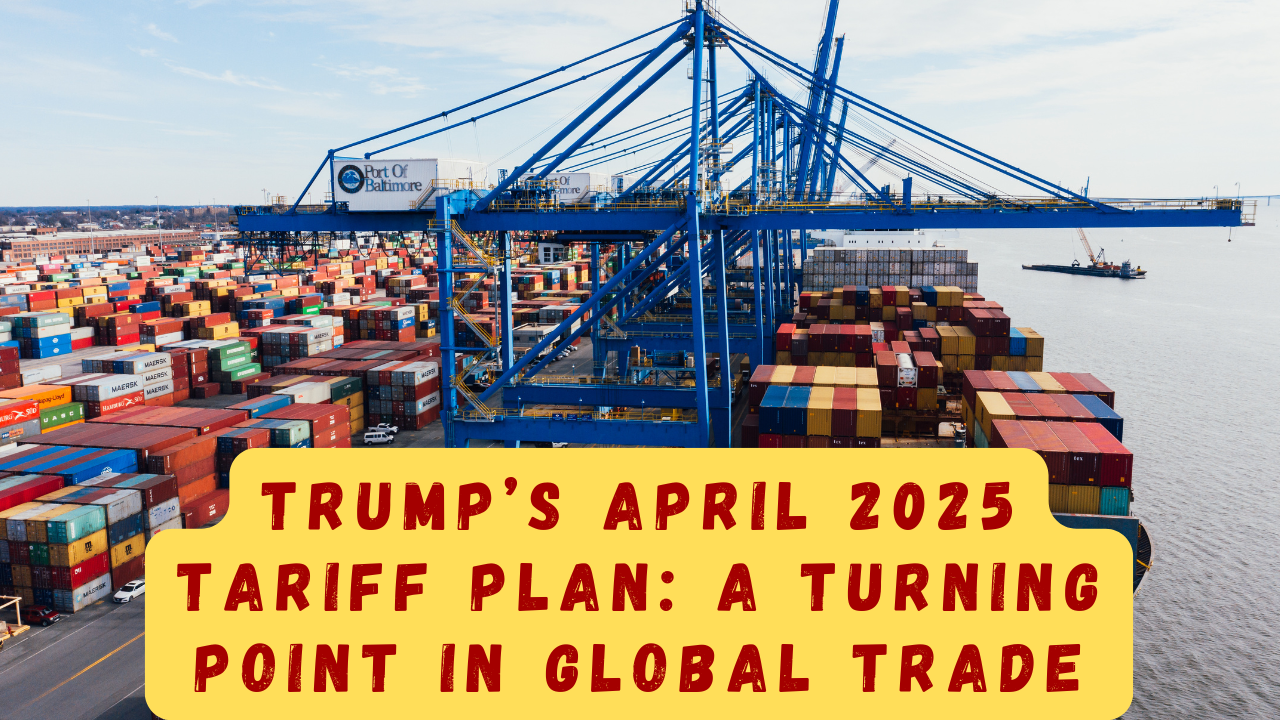
President Donald Trump officially unveiled one of modern American history’s most aggressive trade strategies on April 2, 2025. It is a sweeping new tariff plan that redefines how the United States interacts with the global economy. Trump’s administration has dubbed this plan Liberation Day. This bold move marks a dramatic escalation in economic nationalism. It has a huge impact on global markets, allies, and rivals, so they are all reacting swiftly to its implications.
The April 2025 Tariff Plan is not just a campaign promise that has come to life but a signal that America under Trump is taking. This is a sharp turn toward self-reliance, toughened borders, and a complete overhaul of trade relationships. The rollout has triggered both praise and concern, depending on which side of the trade equation one falls.
What’s in the April 2025 Tariff Plan?
Trump’s new plan is centered around a universal 10% tariff on all imports, effective April 5, 2025. This means that nearly every product entering the United States—regardless of origin or industry—is now subject to this baseline tax. The administration frames this as a way to “level the playing field” and bring jobs and manufacturing back to American soil.
But the plan goes even further:
Country-Specific Tariffs: Starting April 9, 2025, Trump imposed additional tariffs ranging from 11% to 50% on 57 countries. The most significant target is China. When combining new and existing measures, China’s goods now face an effective 54% tariff.
Tariffs on Canada and Mexico: Despite existing trade frameworks like the USMCA, the plan introduces a 25% tariff on all goods from Mexico and Canada. It has only a few exemptions for treaty-compliant products. Energy imports—especially oil and gas—are directly affected, raising concern in both countries.
These actions were taken because of what the government calls an “economic emergency.” They argue that the U.S. has had long-term trade deficits, a decrease in domestic manufacturing, and unfair trade practices from other countries
Why the Tariff Plan, and Why Now?
The Trump administration argues that decades of “globalist trade deals” have hollowed out the U.S. industrial base. By imposing across-the-board tariffs, the goal is to encourage companies to manufacture in the U.S., reduce dependency on foreign suppliers, and generate revenue to reinvest in national priorities.
According to campaign officials, this tariff structure is expected to raise over $1.5 trillion in federal revenue through 2035. It is believed by the supporters that it could help rebuild infrastructure, revitalize Rust Belt communities, and reclaim America’s economic independence. On the other hand, critics point out inflation risks, global retaliation, and supply chain disruptions. Import-reliant sectors—especially retail, electronics, and clean energy—have already raised alarms about rising costs and delivery delays. American consumers are also likely to feel the impact of higher prices on everyday goods.
Global Reactions and Economic Consequences
The international response has been swift and intense. Countries affected by the new tariffs have begun preparing retaliatory measures. China, the European Union, and Canada all hint at counter-tariffs, legal challenges, or policy shifts. These responses raise fears of a new global trade war similar to Trump’s first term.
Global markets reacted with volatility in the days following the announcement. Stock prices for multinational corporations with heavy import/export exposure dipped, while some U.S.-based manufacturers and steel companies saw short-term gains.
Meanwhile, many developing nations relying on U.S. exports now face potential economic slowdowns. American demand softens under the weight of increased costs. Trade routes and supply chains are reconfiguring in real time as businesses scramble to adjust to the new normal.
Environmental and Energy Impacts
Trump’s tariff plan also creates big problems for America’s goal of growing clean energy. The 10–50% tariffs apply to imports of solar panels, batteries, wind turbines, and electric vehicle parts—many of which are sourced from countries now facing higher duties. This could slow down the U.S. energy transition, so it is making it harder and more expensive to reach climate goals.
This is exacerbated by the impact on energy trade with Mexico and Canada, where oil, gas, and electricity are key components. Tariffs in these areas may lead to higher domestic energy prices and friction within North American energy markets.
What’s Next?
The April 2025 tariff plan is already reshaping the global trade landscape, and it’s only the beginning. Whether the strategy revitalizes American industry—or backfires by sparking inflation, retaliation, and global economic strain—remains to be seen.
One thing is clear. Trump’s new tariff policy is a big change. It shows that America is focusing on protecting its own industries. It also aims to bring jobs back home. The plan pushes for financial independence. It moves away from working closely with other countries. It also steps back from supporting free trade. So, the world is watching, and the stakes are high.
